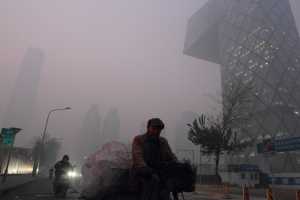
28 Mar Urban Youth Exposed to Air Pollution Have Greater Risk of Psychotic Experiences
MedicalResearch.com Interview with:
 Joanne B. Newbury, PhD
Joanne B. Newbury, PhD
ESRC Postdoctoral Fellow
King’s College London
Social, Genetic & Developmental Psychiatry Centre
Institute of Psychiatry, Psychology & Neuroscience
London, United Kingdom
MedicalResearch.com: What is the background for this study?
Response: Urban living is one of the most well-established risk factors for adult psychotic disorders such as schizophrenia. However, less is known about the role of the urban environment in subclinical psychotic experiences in childhood and adolescence, such as hearing voices and extreme paranoia. These early psychotic experiences are a developmental risk factor for adult psychotic disorders and a range of other serious mental health problems such as depression and anxiety.
It is therefore important that we understand what factors might contribute to the development of early psychotic experiences so that we might be able to intervene and prevent their onset and progression.
In a cohort of over 2000 UK-born children (The Environmental Risk Longitudinal Twin Study), we have previously shown that subclinical psychotic experiences are also around twice as common among children and teenagers raised in urban versus rural settings. We have also shown that this appears to be partly explained by social features in urban neighbourhoods such as higher crime levels and lower levels of social cohesion.
However, no studies have examined the potential link between air pollution and psychotic experiences. This is despite air pollution being a major health problem worldwide (particularly in cities), and despite emerging evidence linking air pollution to the brain.
MedicalResearch.com: What are the main findings?
Response: We therefore linked high-resolution annualized estimates of four outdoor air pollutants (nitrogen dioxide [NO2], nitrogen oxides [NOx], particulate matter with a diameter of less than 2.5 micrometres [PM2.5], and particulate matter with a diameter of less than 10 micrometres [PM10]) to the addresses of E-Risk participants at age 17.
We found that psychotic experiences were significantly more common among adolescents exposed to the highest quartile of NO2, NOx, and PM2.5 after controlling for a range of potential confounders including family socioeconomic status, family psychiatric history, maternal psychosis, adolescent tobacco smoking, cannabis and alcohol dependence, and neighbourhood factors such as deprivation, crime levels, and social cohesion and disorder. Put simply, teenagers who were exposed to the highest (top quartile) level of NO2, NOx, and PM2.5 had respectively, a 71%, 72%, and 45% greater odds for psychotic experiences compared to those with lower exposure.
Furthermore, adolescents living in the most urban settings had a 94% greater odds for psychotic experiences compared to adolescents living in rural settings. We found that NO2 and NOx statistically explained around 60% of this association between urban living and adolescent psychotic experiences.
MedicalResearch.com: What should readers take away from your report?
Response: The main thing to take from this report is that it is the first study to provide evidence linking air pollution to subclinical psychotic experiences. However, the findings need to be replicated in other studies before we can draw any conclusions or make recommendations about interventions. Readers should also interpret the findings with caution, as the study is observational (so we cannot know the causality of the findings), and it is also cross-sectional. In addition, we were not able to take into account other factors that are correlated with air pollution such as noise pollution.
MedicalResearch.com: What recommendations do you have for future research as a result of this work?
Response: We now need to replicate these findings in other studies, and use a longitudinal design to explore the potential link between early-life exposure to air pollution and psychotic experiences. We also need to explore the potential link between noise pollution and psychotic experiences, which could be associated since noise pollution disrupts sleep and is stressful. Lastly, we need to explore potential mechanisms which might link air pollution to psychotic experiences, such as inflammation.
MedicalResearch.com: Is there anything else you would like to add?
Response: I have no disclosures. You can download and read the full article here:https://jamanetwork.com/journals/jamapsychiatry/fullarticle/2729441
Citation:
[wysija_form id=”3″]
[last-modified]
The information on MedicalResearch.com is provided for educational purposes only, and is in no way intended to diagnose, cure, or treat any medical or other condition. Always seek the advice of your physician or other qualified health and ask your doctor any questions you may have regarding a medical condition. In addition to all other limitations and disclaimers in this agreement, service provider and its third party providers disclaim any liability or loss in connection with the content provided on this website.
Last Updated on March 28, 2019 by Marie Benz MD FAAD
